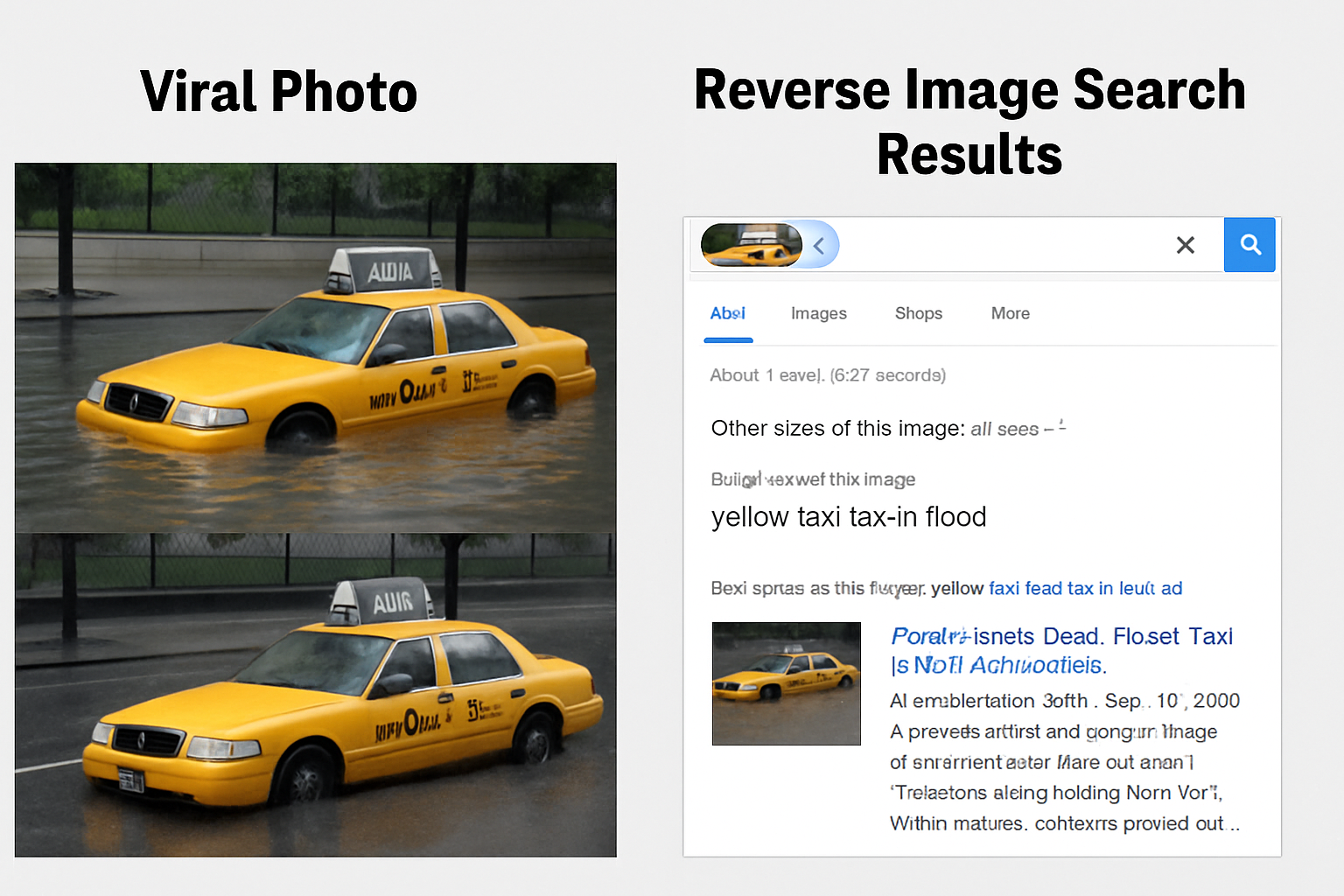
Today, journalists and human rights organizations face unprecedented challenges verifying information amid digital misinformation and restricted access. Traditional sources, such as field reports or confidential interviews, are often unavailable or unreliable. Open-source intelligence (OSINT) provides an alternative approach for these groups, utilizing publicly available data to uncover and verify critical information without relying on leaks or classified sources. For journalists, osint is particularly valuable, as it harnesses vast amounts of data to offer new insights. In 2022, The New York Times confirmed Russia’s use of cluster munitions in Ukraine through TikTok metadata, satellite imagery, and geolocation, days ahead of official reports. That investigation, driven entirely by OSINT, demonstrated the power of public data to support truth and accountability.
This guide is designed for journalists of all kinds, from freelancers to investigative reporters in major newsrooms, as well as human rights investigators working to uncover the truth in closed or conflict-ridden environments. It’s practical, ethical, and packed with real-world examples.
Here’s what you’ll take away:
- A clear breakdown of the OSINT lifecycle, tailored to the realities of modern investigators.
- The legal, ethical, and operational foundations of open-source intelligence journalism, so your investigations withstand scrutiny.
- Powerful tools like Kindi are designed for intelligence-grade link analysis and entity mapping.
- Field-tested investigative techniques, data extraction methods, and threat-aware strategies for verifying everything from burner accounts to geotagged media.
- Real-world use cases that demonstrate how OSINT plays a vital role in investigations into political corruption, environmental crimes, conflict verification, and other areas.
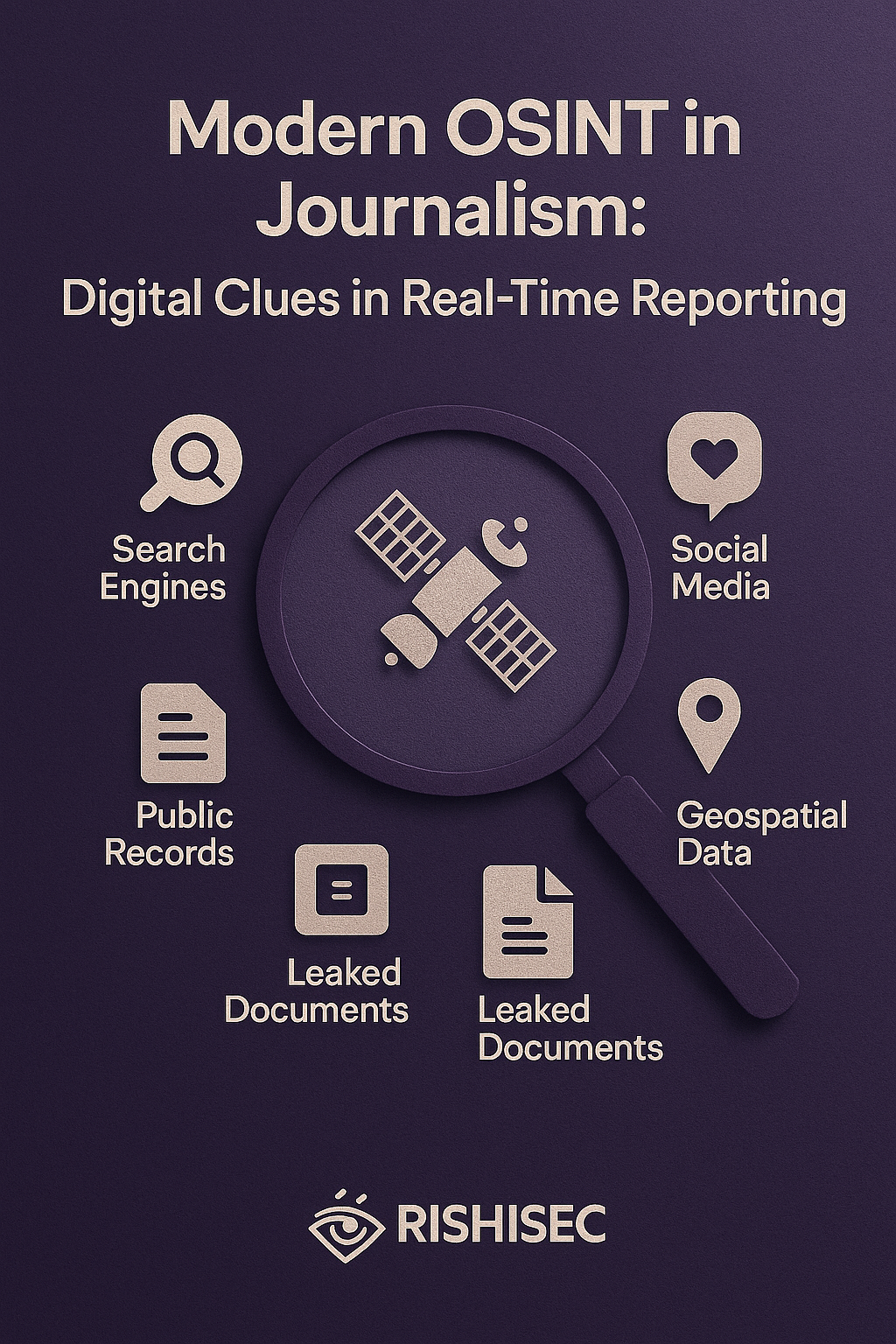
Modern OSINT in Journalism: Digital Clues in Real-Time
What is OSINT for, and Why Is It Essential for Journalists and Human Rights Organizations?
Open-Source Intelligence (OSINT) is the collection and analysis of publicly available data for investigative purposes. For journalists, this means utilizing sources such as social media, satellite imagery, metadata, public records, leaks, and search engine tricks to uncover and verify information.
Why It Matters More Than Ever
Traditional investigative methods still have value, but they can be too slow or limited, especially in authoritarian regimes or when breaking news situations arise. With OSINT, journalists can:
- Verify images and videos in real time
- Map disinformation campaigns across platforms.
- Trace shell companies using leaked registries and domain records
- Build timelines from a digital footprint
- Track human rights violations in real time through geotagged media and social posts, especially when field access is restricted.
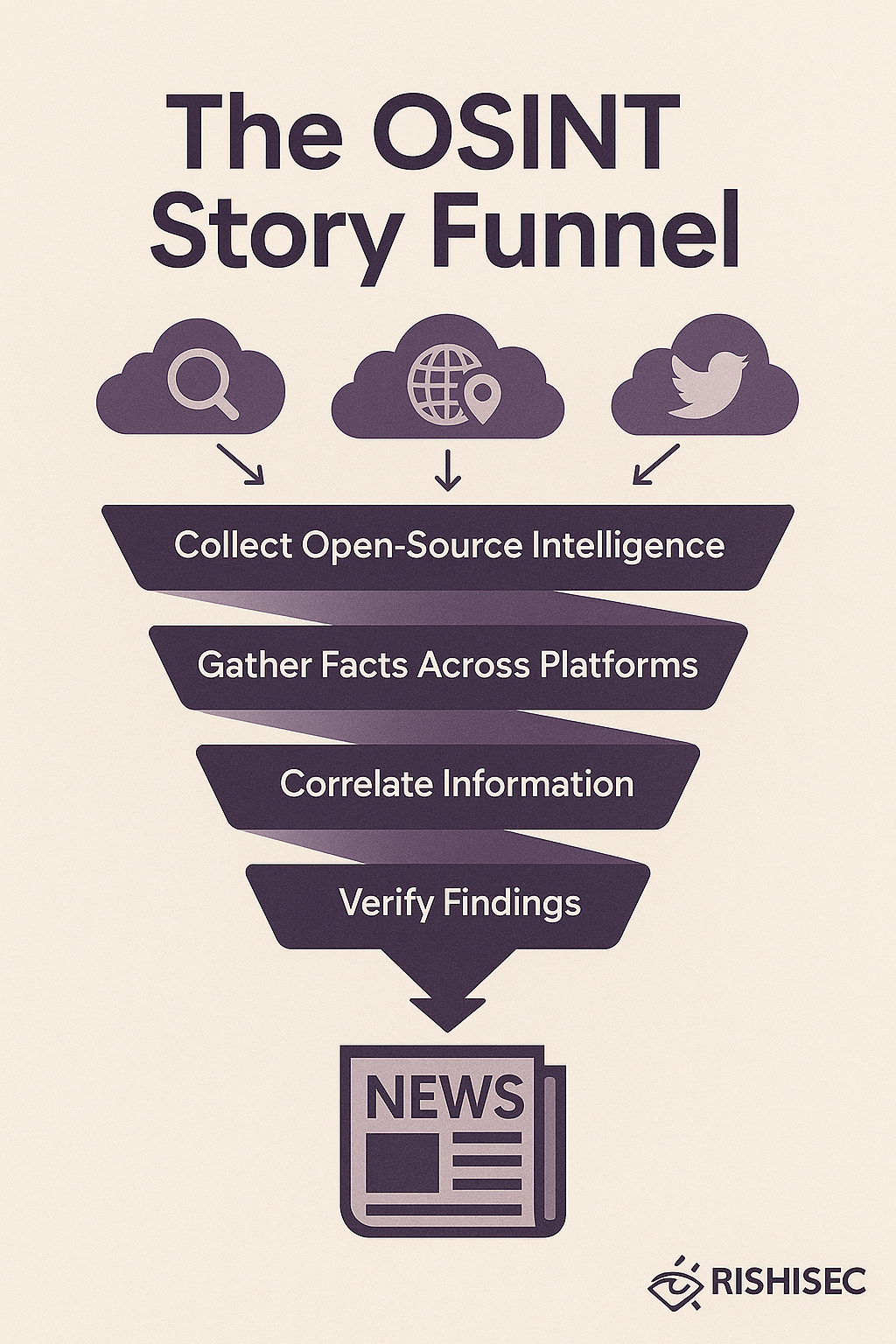
How to Verify a Viral Video in Minutes
You come across a video circulating widely on X (Twitter) claiming to show military violence in a conflict zone. To verify its authenticity:
- Paste the video URL into InVID, a tool designed for video verification.
- Use the Keyframes feature to extract still images from the video.
- Perform a reverse image search on the keyframes using Google Images, Yandex, or Bing to see if the same visuals were used in older stories.
- Cross-reference the shadows in the video using SunCalc to verify if the lighting matches the claimed time and location.
Traditional Methods: Still Valuable, But Incomplete
While field reporting, confidential interviews, and official records remain vital, they can be slow, limited by geography, or entirely cut off in authoritarian contexts. Traditional sources may be reluctant to speak due to safety concerns, legal threats, or institutional pressure. This is where open-source intelligence journalism becomes a lifeline.
OSINT empowers journalists to:
- Work cross-border, even in closed or hostile regions.
- Verify photos and videos in real time.
- Reconstruct timelines and movements digitally.
- Investigate shell corporations or suspicious domain activities.
- Spot disinformation and bot networks early.

Traditional Investigation vs. OSINT-Enhanced Journalism
The OSINT Lifecycle for Investigators and Journalists
Just like traditional investigations follow a process, so does open-source intelligence. The OSINT lifecycle provides a clear and repeatable structure for conducting responsible and efficient investigations using publicly available data. For a law enforcement perspective on applying the OSINT lifecycle, including alias tracing, geolocation, and dark web monitoring, read our guide on OSINT for Law Enforcement.
Here’s how journalists can apply each stage of the cycle:
1. Planning & Direction
Start by framing the core question of your story. Are you verifying a video? Tracing a bot network? Investigating shell companies? Example: A journalist covering civil unrest in Sudan maps TikTok and X (Twitter) uploads by timestamp and GPS to build a verified timeline. Also, a human rights researcher is verifying reports of police brutality.
2. Collection
The collection of data marks the beginning of digital legwork. You’ll pull data from OSINT-friendly platforms like:
- Social media
- Domain registries
- Satellite imagery databases
- Leaked document repositories
- Human rights databases like ACLED or HRDAG
3. Processing & Exploitation
Now it’s time to clean and organize the raw data. That means:
- Translating foreign language posts
- Structuring screenshots into timelines
- Tagging and indexing by time, platform, and source reliability
Sound processing makes your data searchable and shareable, especially if working in a newsroom.
4. Analysis & Production
This stage is where you begin to spot connections. Ask:
- Do multiple usernames link back to the same entity?
- Does that geotagged image match the claimed location?
- Can you reconstruct a digital timeline of events?
5. Dissemination & Integration
Once your findings are verified, present them. This might include:
- Annotated satellite maps
- Side-by-side video verifications
- Interactive graphs
- Source-labeled visuals
6. Feedback & Evaluation
Step back and ask: Did I answer the right question? Did any new leads emerge?
Share drafts with colleagues or OSINT communities for validation and feedback. This final review often sharpens your conclusions or reveals blind spots worth revisiting.
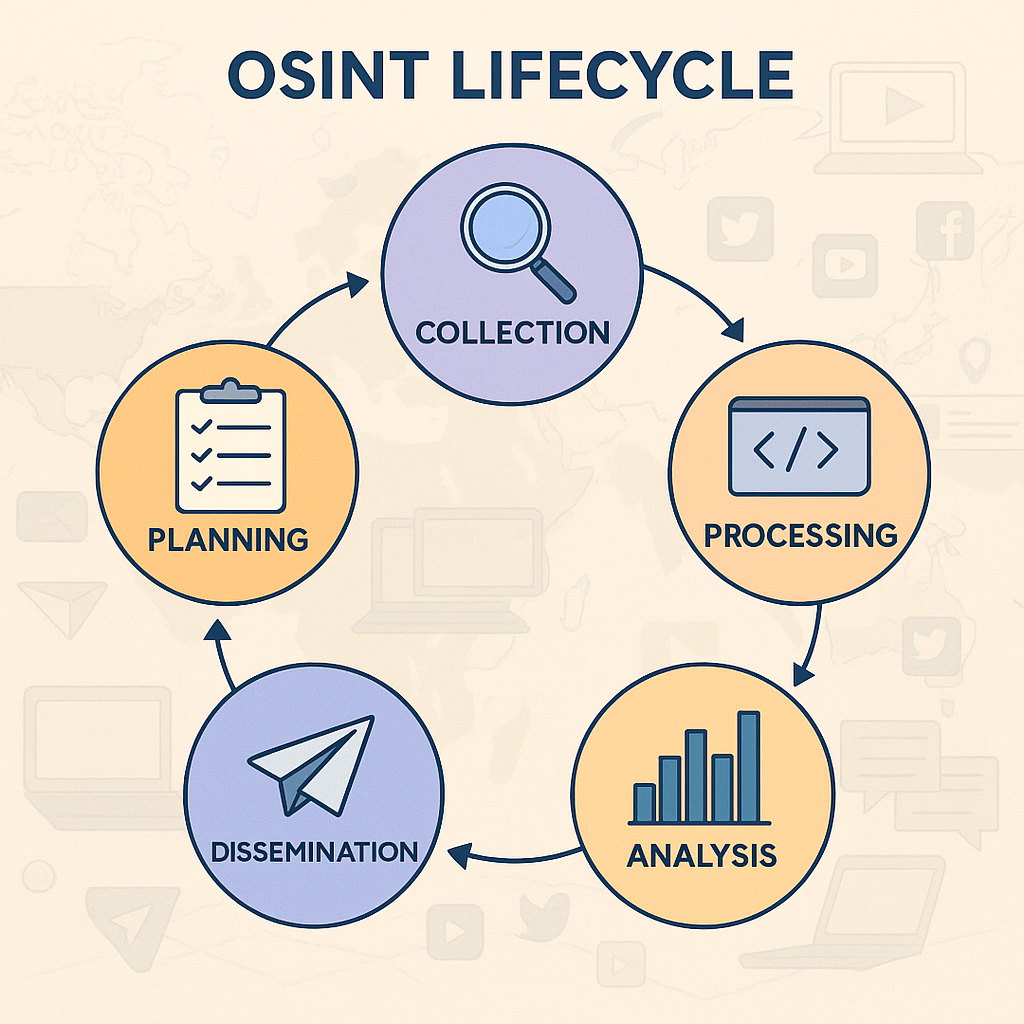
The OSINT Cycle
How to Trace a Username Across Multiple Platforms
You’re investigating a social media campaign and come across a suspicious username: @redsignal21. Is it connected to other disinformation accounts?
- Use Namecheckup or WhatsMyName to search the handle across 100+ social media platforms.
- Look for pattern matches, such as the same avatar, bio, or posting habits.
- Combine your findings with a Google Dork query like:
site:pastebin.com “redsignal21”
The OSINT Mindset: What It Takes to Succeed in Open-Source Intelligence Journalism
Success in OSINT isn’t just about accessing powerful tools like Kindi or satellite imagery databases; it’s about cultivating the right investigative attitude. Here’s how to build the right mindset:
1. Curiosity: “What Else Is Connected?”
The best OSINT journalists don’t stop at the first clue. They dig deeper. When you discover a Telegram username linked to a domain registration, ask: “What else is this alias tied to?” Curiosity drives lateral investigation, from metadata in leaked PDFs to user handles in obscure forums. This trait turns a single lead into a whole network map.
2. Skepticism: Don’t Trust, Verify
Good journalists don’t take anything at face value, and that principle is doubly true for OSINT. A viral photo may have a compelling caption, but only the metadata and reverse image search confirm authenticity. Always question timestamps, user history, and upload sources.
3. Creativity: Think Beyond Google
The open web is vast, but it takes creative strategies to uncover actionable intel. Consider searching filenames in foreign languages, exploring cached pages, or using “site:” operators on lesser-known forums. Pairing OSINT tools with manual search hacks, such as those used by Kindi, can reveal narratives that are often buried in plain sight.
Creativity helps uncover stories others overlook. From GitHub commits linked to nation-state hackers to leaked data hidden in public spreadsheets.
4. Ethical Awareness: Know Your Boundaries
With power comes responsibility. OSINT journalists must avoid doxing, respect platform terms of service, and protect the privacy of vulnerable individuals. Just because data is publicly available doesn’t always mean it should be published. Ethical open-source intelligence journalism builds trust, credibility, and long-term reader loyalty.

Traits of a Successful OSINT Journalist
How to Confirm Whether an Image Is Real or Doctored
An image claiming to show a riot in a European city goes viral. Before using it:
- Upload it to TinEye or Google Reverse Image Search to find its original upload date.
- Use InVID’s Contextual Analysis to extract metadata and assess whether the image’s narrative matches the evidence.
- Cross-check the timestamp with local weather data and background clues (billboards, signage, shadows).
OSINT Tools for Journalists and Human Rights Investigators
Investigative work, whether for human rights documentation or journalism, requires the ability to investigate digital evidence across platforms, timelines, and networks. Here’s a categorized breakdown of the essential tools every OSINT-driven journalist and analyst should have in their investigative arsenal.
1. Identity & Alias Tracing
- Username lookups – Discover connected accounts by tracing aliases across social platforms.
- Domain and email correlation tools – Link burner accounts to real-world infrastructure.
- Entity resolution systems – Cross-reference names, handles, and domains with associated public records.
2. Location & Visual Verification
- Satellite imagery viewers – Validate events through location snapshots.
- Sun path analyzers – Match shadows to timestamps for photo verification.
- Metadata extraction tools – Pull EXIF data from photos and videos.
3. Social Media Intelligence
- Search operators – Filter platforms for posts by date, location, or phrase.
- Open channel monitors – Observe public group activity and engagement trends.
- Archived thread viewers – Retrieve deleted or censored content.
4. Link Analysis & Narrative Mapping
- Relationship visualizers – Map out how individuals, entities, and websites connect.
- Timeline builders – Reconstruct digital sequences from raw OSINT.
Kindi from RishiSec empowers both journalists and human rights investigators to build investigative timelines, map influence operations, and visualize the behavior of actors across networks.
Need everything in one place?
Kindi is explicitly built for investigative professionals. From tracing aliases to mapping global propaganda, they combine investigative power with legal and ethical safeguards. It is so straightforward that no technical background is required.
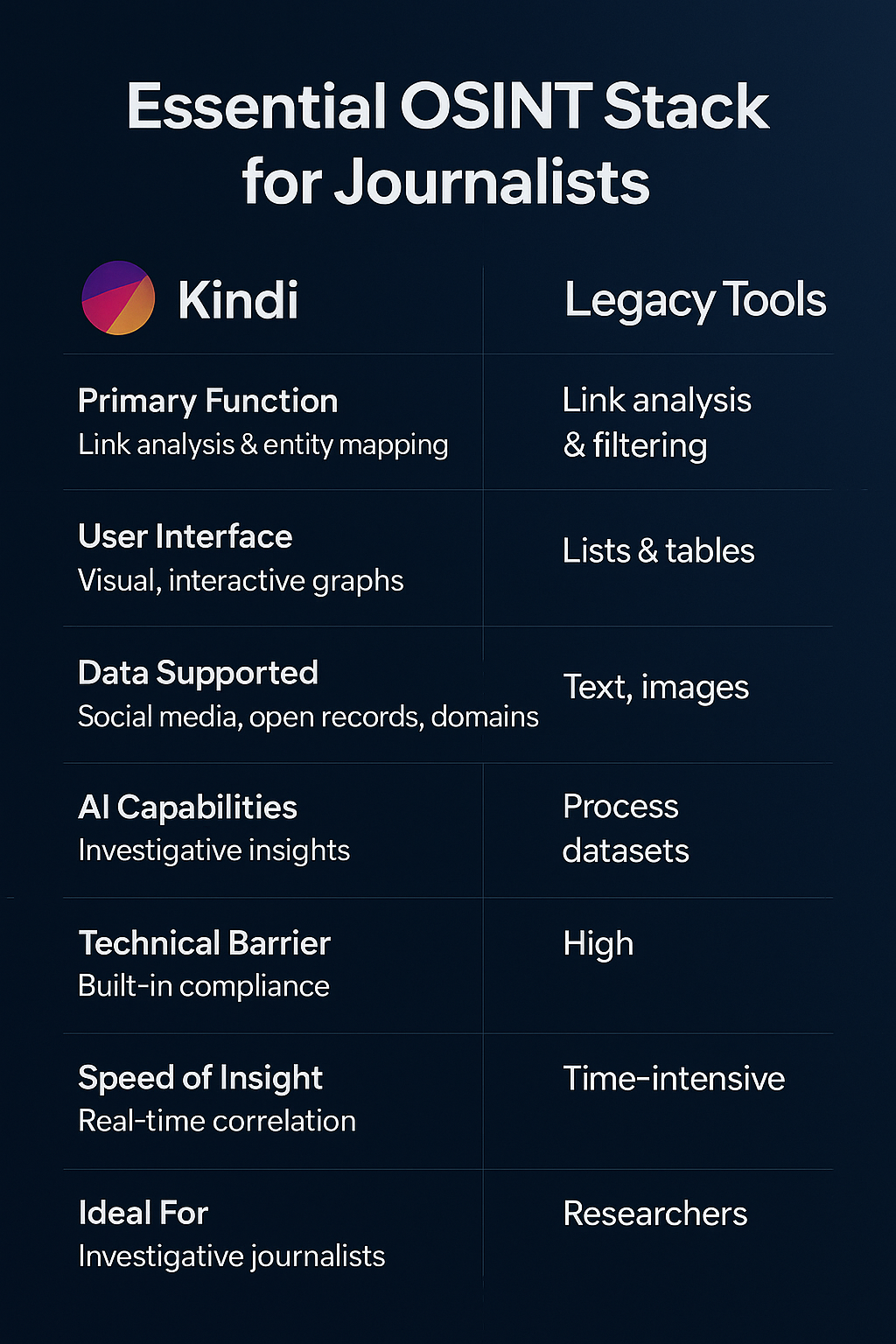
Essential OSINT Stack for Journalists
High-Impact OSINT Use Cases in Journalism
Below are real-world examples and fictional vignettes illustrating how OSINT powers impactful reporting:
A. Unmasking Disinformation Campaigns
Scenario: A journalist investigates a surge of anti-election hashtags linked to foreign influence.
- Approach: Analyze the origin and propagation of hashtags using tools like Kindi to trace amplification networks.
- OSINT Application: Use WHOIS to trace websites posting conspiracy content; map bot behavior across Twitter/X.
- Outcome: Expose coordinated disinfo efforts tied to known influence operations.

Bot-driven hashtag propagation
B. Exposing Shell Companies
Scenario: Investigating the hidden wealth of a government official.
- Workflow:
- WHOIS to identify related domains
- Panama Papers + OpenCorporates to trace shell firms
- Visual link maps to connect offshore assets
- Impact: Public accountability, law enforcement probes, or policy reforms.
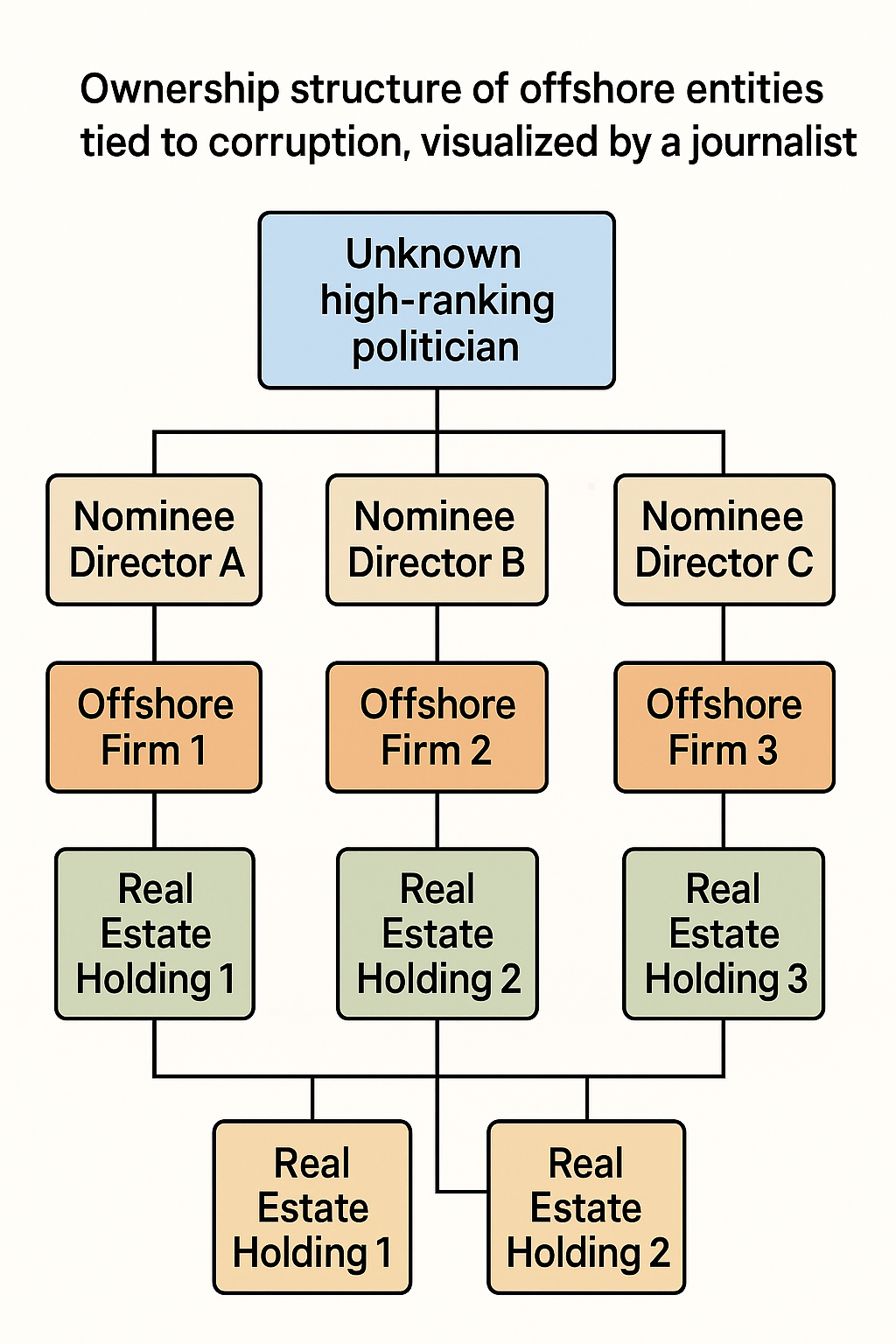
Shell company ownership tree
C. Monitoring Protests & Repression
Scenario: An Iranian protest is met with digital blackouts.
- OSINT Techniques:
- Monitor TikTok uploads and VPN traffic.
- Compare metadata from protest footage.
- Analyze Telegram channel activity.
- Result: Timely exposés of censorship, internet throttling, and human rights violations.
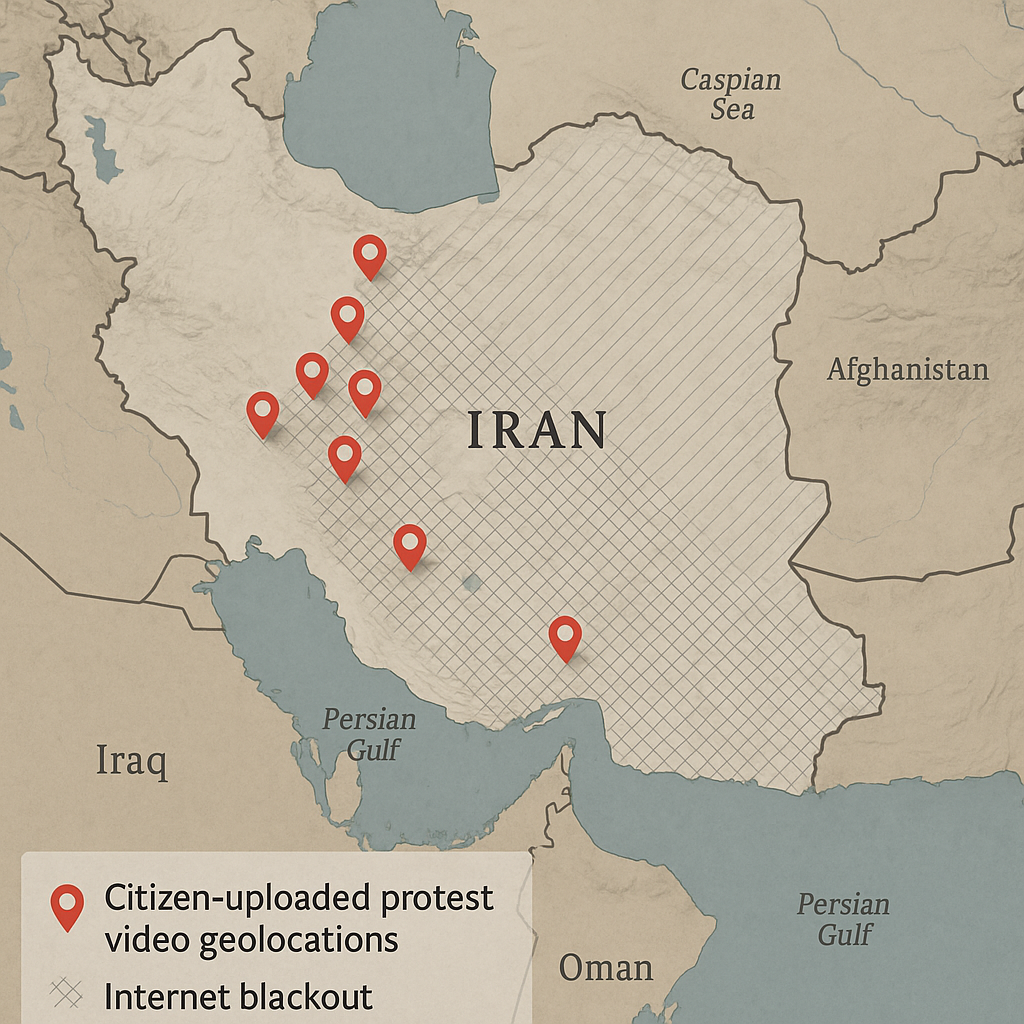
Map overlay of protest video geolocations and connectivity outages
D. Identifying Misinformation in Breaking News
Scenario: A viral photo claims to show flooding in NYC. Is it real?
- OSINT Verification: Use reverse image search, weather data from the day, and look for image reuse from previous disasters.
- Real Example: During Hurricane Sandy, journalists debunked images circulating from India and the Philippines.

Side-by-side image comparison with reverse image search results
E. Investigating War Crimes
Real Example: The New York Times Visual Investigations unit reconstructed Russian airstrikes in Syria by analyzing satellite imagery, social media, and audio frequencies.
- OSINT Process:
- Analyze crater locations on satellite images.
- Correlate timestamps with uploaded videos and intercepted comms
- Impact: Held military powers accountable using open-source data.

Timeline diagram linking blast crater images, video evidence, and comms log.
Ethics and Legal Considerations for Journalists
Whether documenting abuses for international justice or publishing groundbreaking investigations, ethical OSINT practices are crucial to avoid re-traumatizing survivors or endangering sources.
Respect Platform Rules:
Sites like Telegram, GitHub, and LinkedIn have Terms of Service. Avoid scraping or impersonation, as this could result in a ban or lawsuit.
Protect Privacy:
If a photo, username, or metadata isn’t critical to your story, blur it. Always ask: Is this necessary and in the public interest?
Minimize Harm:
Never expose personal details from leaked forums or protest footage without consent. Secure your sources and redact any non-essential information.
Act Ethically, Not Just Legally:
Monitoring a disinfo group may be fair. Publishing their chats? Maybe not. Compelling OSINT journalism strikes a balance between public need and human dignity.
In the pursuit of truth, journalists must strike a balance between public interest and the ethical implications of their methods. Tools like Kindi can support this by offering timeline-based correlation and AI assistance without encouraging misuse or overreach.
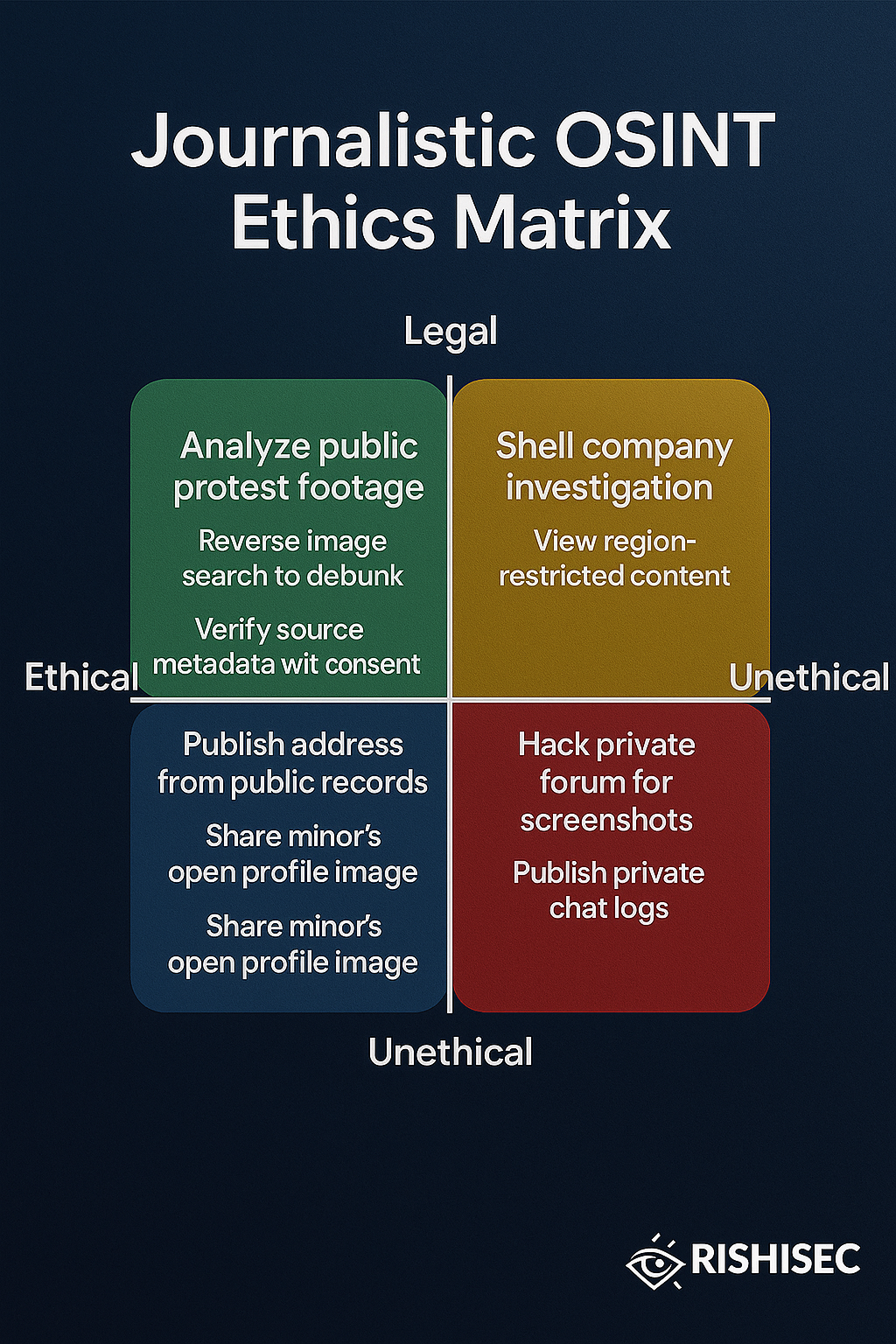
How OSINT Solves a Real-Life Case
A story on how OSINT helped a journalist uncover a money laundering scheme
In early 2024, a Berlin-based freelance journalist got a tip: a Prague-based NGO was allegedly funneling donations to extremist groups in South America.
Using Kindi, a journalist-friendly OSINT platform, they started with a single domain name and quickly unraveled a web of deception. The NGO’s email was linked to a burner Gmail account, which Kindi traced to aliases across Telegram and Pastebin.
The investigation revealed:
- Multiple shell companies in the British Virgin Islands
- Domains tied to disinformation blogs
- Metadata linking the NGO to a far-right crowdfunding site
Kindi’s visual link graph made the connections undeniable. The journalist’s editor approved the story based solely on the evidence. Within days, Czech authorities froze the NGO’s accounts, and the EU launched a formal investigation. No leaks. No insiders. Just public data and the right investigative tool.

The Future of Investigation Is Open-Source Intelligence
The investigative landscape is shifting, and OSINT is at the heart of that transformation. What once required weeks of cross-border travel and access to hard-to-find sources can now begin with a geotagged image, a disposable email address, or a leaked registry. With publicly available data, journalists can track corrupt networks, verify field reports in real time, and expose digital influence campaigns with forensic accuracy. However, the power of OSINT goes beyond efficiency; it adds credibility, transparency, and depth to investigative reporting.
That’s why modern newsrooms and human rights groups need tools that elevate their digital investigations without overwhelming their workflows.
At RishiSec, we’ve built a tool with journalists in mind:
- Kindi offers AI-powered link analysis for rapid entity correlation, identity tracing, and automated enrichment, which are essential for uncovering hidden connections in leaks, forums, and social networks.
These tools are built for ethical, efficient journalism, designed to support everything from fact-checking viral videos to investigating multinational corruption. If you’re ready to take your reporting further, these tools are more than software; they’re your digital allies. To learn how to apply everything in this blog with hands-on labs, real-world examples, and tools like Kindi, sign up for our FREE OSINT for Journalists and Human Rights Organizations course.


